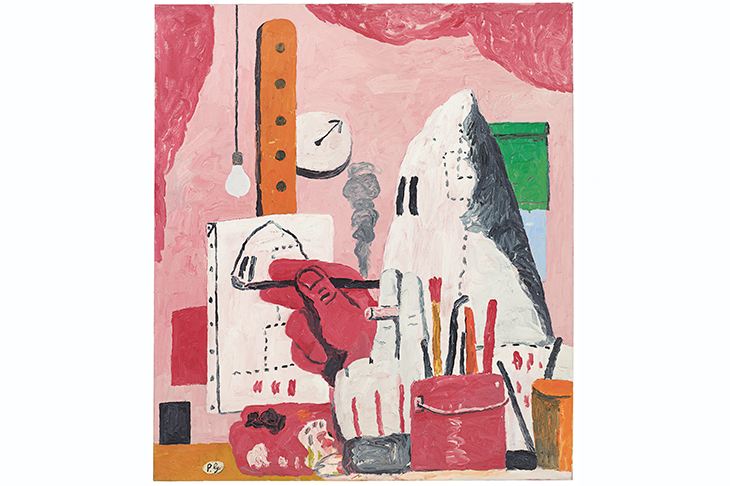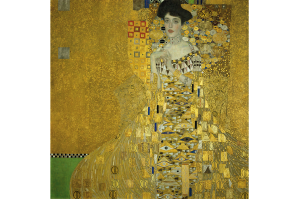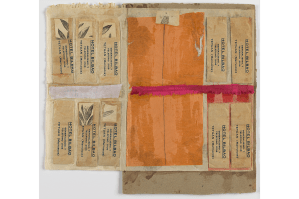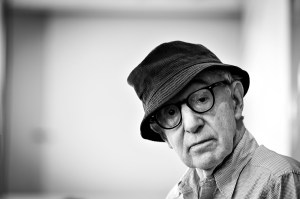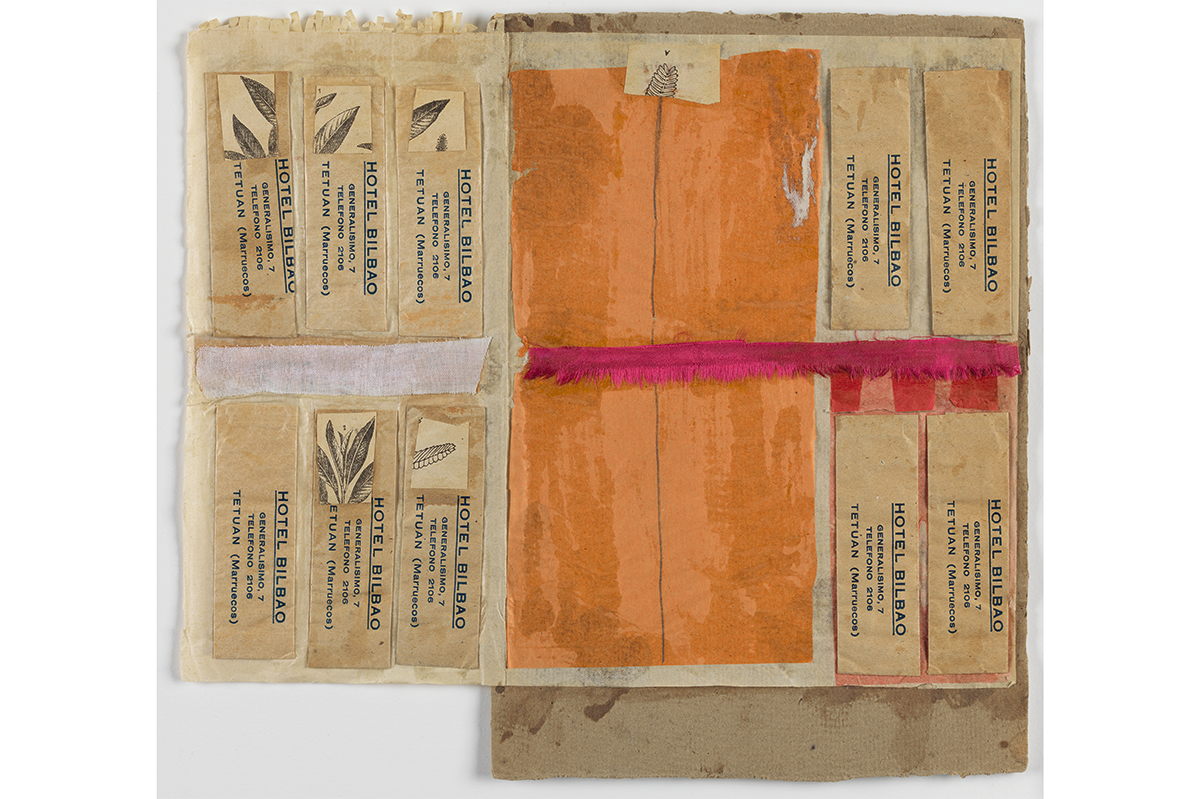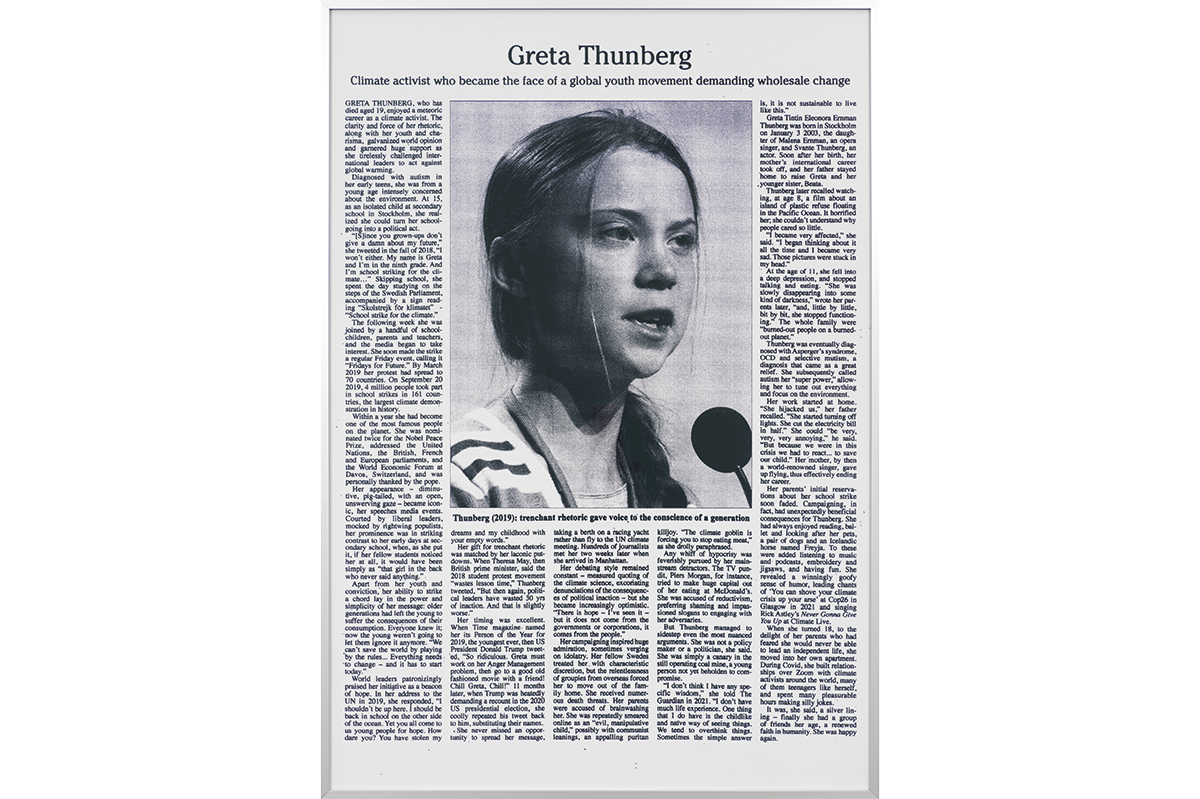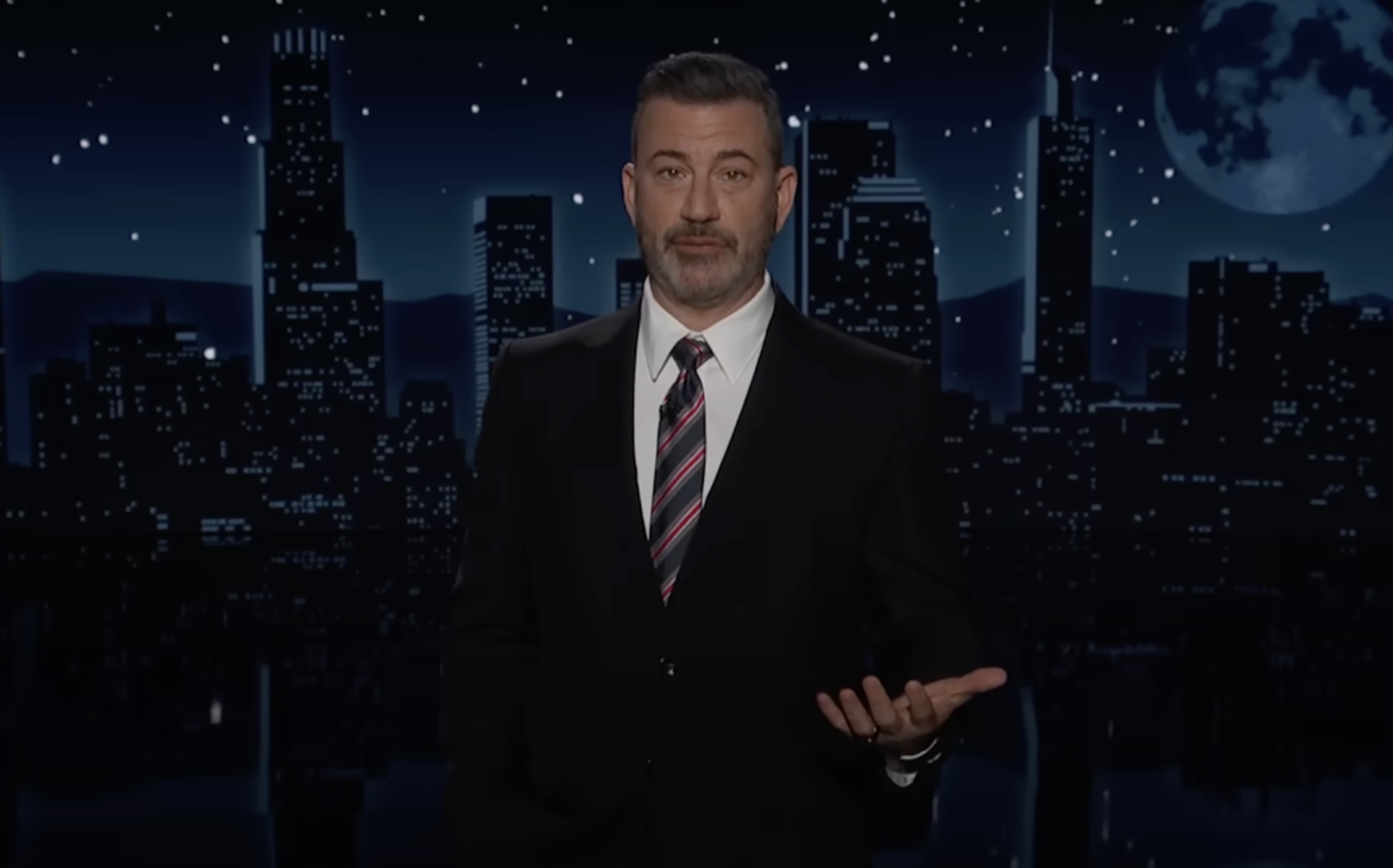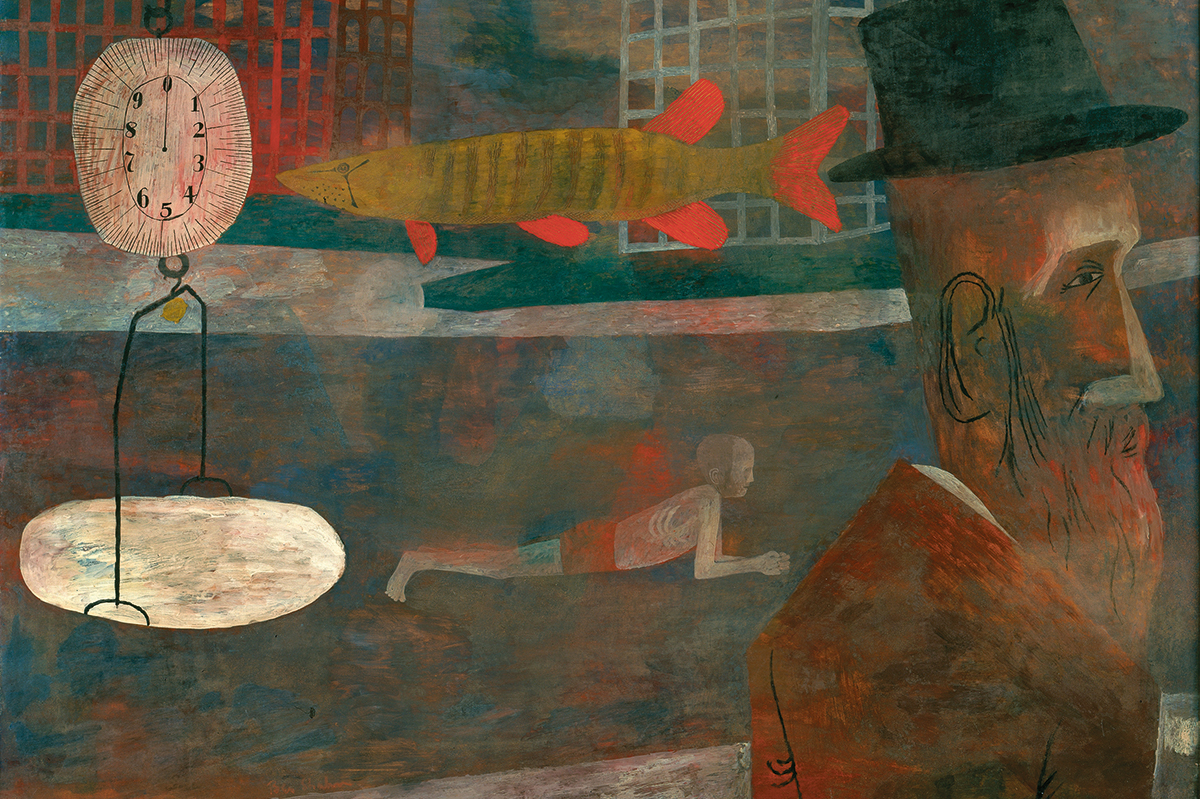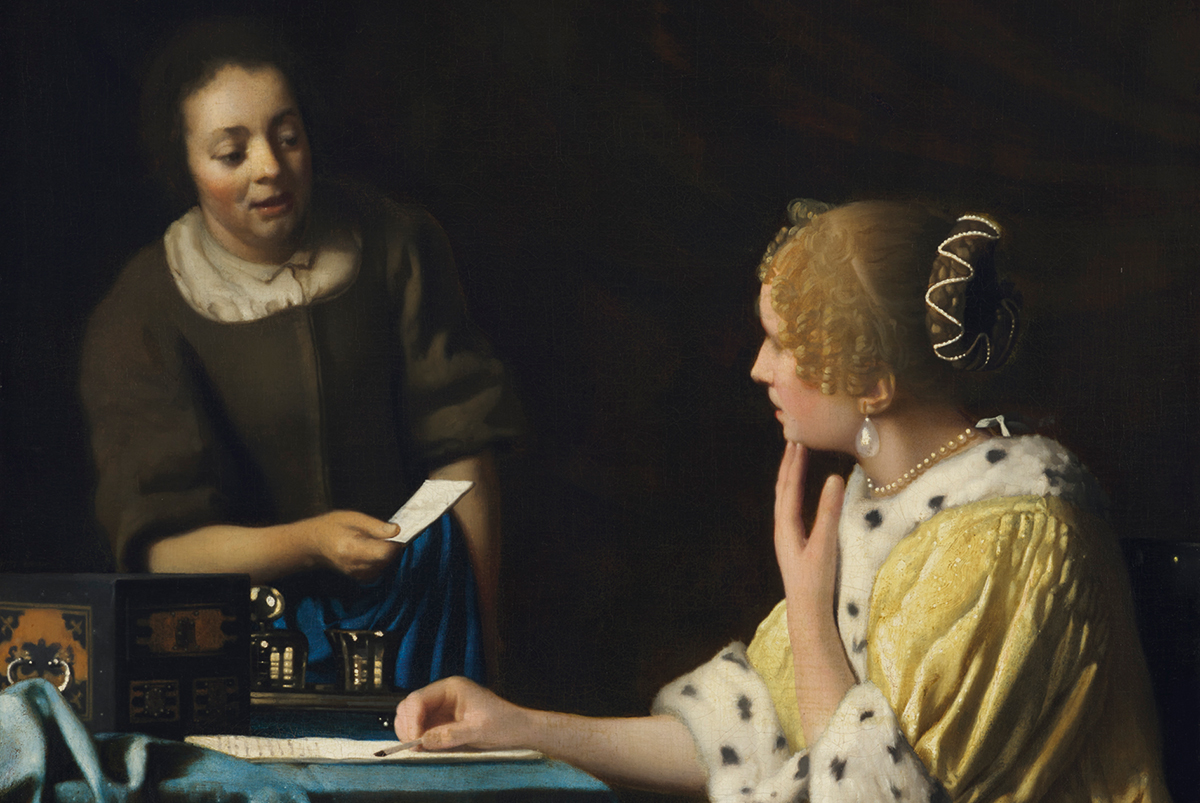Philip Guston’s later work is — and I say this with love — nails-down-a-blackboard weird. The vapid pinks and flat reds lend a nightmare cheerfulness. A menacing American wearing Mickey Mouse gloves is rendered in cartoonish style. A clock shows it is time to panic, challenging you to call out the hood for the Ku Klux Klan symbol it appears to be.
By the time he started making these paintings, in 1968, Guston was pretty much post-everything: post-realism, post-abstract expressionism, post-criticism (he and his wife Musa sailed to Italy the day after the show’s opening night, and when a review found him in Venice, poste restante, he dropped it in a canal). He was also post-breakdown and, with the cigarettes and alcohol in his work more than painter’s props — he smoked three packs a day — hastening himself to post-mortem. When he died in 1980, he was lucky to have a gifted advocate in his daughter, Musa Mayer, who spoke to me over the phone about her new book and her father’s recent cancellation.
A big traveling retrospective, due to start at the National Gallery in Washington DC, was notoriously binned last September. ‘We are postponing the Philip Guston Now exhibition,’ announced a joint statement from the four host museums, ‘until a time at which we think that the powerful message of social and racial justice that is at the center of Philip Guston’s work can be more clearly interpreted.’ They were referring to the images of hooded KKK figures in both early and late Guston. Kaywin Feldman, the director of the National Gallery, said that Guston, who was Jewish, had ‘appropriated images of black trauma’.
‘I was really wounded by the actions taken and particularly that statement,’ Musa Mayer tells me. ‘I thought that was really uncalled-for, and a misunderstanding.’ Mark Godfrey, a curator at Tate Modern, where the show was also booked to appear, called the argument for the cancellation ‘extremely patronizing’, and was suspended for it by the Tate. ‘He dared to speak out and was reprimanded,’ says Mayer.
Godfrey explained some historical context to me over the phone: ‘Guston first witnessed the KKK in the streets, when he was a boy growing up in Los Angeles. His parents were Jewish immigrants, who had fled pogroms in Odessa. The KKK, which had five million members at the time of the Depression, was anti-Semitic and anti-immigrant as well as anti-black.’
Born Goldstein, Guston changed his name but later regretted the deracinating effect of the change, particularly, says his daughter, after the facts about the Holocaust emerged. Guston also had the personal tragedy, aged 10, of finding his father’s body after he had hanged himself in an outhouse at their home. Working at a dump to support his family had compounded his father’s psychic collapse. ‘The pain and the persecution and the unfairness of all he experienced as the child of refugees never left him,’ says Mayer. ‘In his love of Renaissance art he was particularly drawn to images like Uccello’s “Battle of San Romano”, to images of horror, really. He never found the angels in Heaven very interesting.’
At high school, he and his friend Jackson Pollock were expelled for making a satirical pamphlet about the school’s military training and athletics. Guston won prizes for his cartoons, but taught himself to draw from books of Old Masters and De Chirico, and quit art school early to become a political muralist, influenced by Mexican social realism. In 1930, a John Reed Club with his anti-KKK art on its walls was raided by the LA police and the images shot out.
In 1934 he and a friend, Reuben Kadish, went down to the San Pedro docks. ‘Reuben and I wanted to go to Italy to see the old frescoes firsthand.’ But when they discovered how much the fare was, they settled for Mexico. There, helped by the communist revolutionary painter David Alfaro Siqueiros, they secured a canvas 1,000 feet square: the wall of the former Summer Palace in Morelia, which they covered with distorted visions of war and fascism (their work is extant, though in bad shape). Its hooded figures are grandiose and terrifying; later, in his fifties, Guston made them cartoonish, belittled, a goon squad.
‘They’re not given any grandeur later,’ says Mayer. ‘He started off pointing the finger at unknown figures doing evil, then he paints himself in that costume. So what he’s saying, it seems to me, is that the potential for evil resides within us all. My feeling is these are perfectly meant for our times, and would actually engender the kind of dialogue we need to have about white culpability and the banality of evil.’
In the UK, Tate Modern discussed Guston’s work with its BAME (Black, Asian and minority ethnic) network in preparation for the show. The network’s chair, Rudi Minto de Wijs, who works in the Tate’s marketing department, tells me that Philip Guston Now would ‘appeal to those Tate-goers keen to align and educate themselves on active allyship’.
Kaywin Feldman of the National Gallery was also looking to broaden the range of voices in her institution’s discussions, but she came to a different conclusion. While 98 percent of her curatorial staff is white, 83 percent of the museum guards are BIPOC (Black, Indigenous and People of Color). Conversations with ‘a handful’ of guards took place before the cancellation, but the Gallery did not share any Guston works with its employees: ‘I was asked not to show them the images because they are so disturbing at this moment in time.’ Feldman says that ‘we will be spending more time hearing from our guards on this particular exhibition, about how we might display and interpret it’.
Guston painted ‘Bombardment’, a dynamic tondo, in 1937 in response to the Spanish Civil War. In 1940, employed by the Works Progress Administration to paint murals, his work on a housing project in Queens was temporarily halted when a government inspector, alert to communist emblems, thought he spotted a hammer and sickle in the curve of a dog’s tail against a child’s leg. ‘My father was ordered off the scaffold until his background could be investigated,’ Mayer says.
Although Guston grew weary of officialdom, the WPA kept him ‘alive and working’ and he won prizes and posts, a Guggenheim fellowship and a Carnegie prize. Winning the Prix de Rome took him, finally, on the longed-for trip to see Renaissance art firsthand in 1948. He was gone for a year, despite his new daughter. ‘Being a good father was certainly the least of his concerns. At the same time, being a good daughter was well on the way to being the greatest of mine,’ writes Musa Mayer wryly in her excellent 1988 memoir Night Studio.
She describes the torrents of advice and conversation Guston gave his students, but his absolute absence of interest in her attempts at painting. Might this have been different had she been a boy? I ask her. She’s on the phone, but I can hear her shaking her head, smiling. ‘I think that [relationship] would have been impossible,’ she says. ‘I mean, you’ve seen [in Night Studio] how incredibly self-involved and absorbed he was… I think he ultimately made space for me because I was female and I used that relationship he had with my mother as a model, I revolved around him as she revolved around him and his needs.’
He came back from Europe with Beckett and Kafka on his mind and a germ of abstraction in his sketches. Exit the massive, manacled figures and labored allegories; enter the numinous blob.
‘I would stand in front of the surface and simply keep on painting for three or four hours,’ Guston recalled. He was at the center of New York abstract expressionism with his friends Mark Rothko, Willem De Kooning, Franz Kline, Barnett Newman and, of course, Jackson Pollock, who once tried to throw Guston out of a window during a drunken argument over who was the better painter. In protest against the shallow commercialism of op art in 1962, he and his peers left their gallery en masse. Guston’s close pals included the composers John Cage and Morton Feldman and the writer Philip Roth.
Guston’s life is a history of the 20th century. He abandoned abstraction in part because it felt impotent in the face of Vietnam and civil rights, the assassination of Martin Luther King, and police violence in Chicago in 1968. ‘What kind of man am I,’ he asked, ‘sitting at home, reading magazines, going into a frustrated fury about everything… and then going into my studio just to adjust a red to a blue?’
And so came about his later phase, his Klan figures, his Robert Crumb-like piles of feet and legs referencing the Holocaust, his own head a guilty cyclops, all of it now pushed back to 2023. Mark Godfrey tells me he remains passionately interested in Guston, but is leaving his role as curator at Tate Modern for another project. Kaywin Feldman has said that it was ‘just extraordinary’ that critics hadn’t noticed the pressure that museums are under, from within and without, to become more inclusive and equitable. She mentioned an anonymous petition received by the museum last summer.
Musa Mayer broadens the debate: ‘All I have to say is, from a feminist perspective, do we really want to see all the nudes come off the walls of the major museums of the world? Because isn’t that where this goes, if you follow the argument? Art reflects its times, you know. Not all artists are liberated, thoughtful commentators, they are just ordinary human beings in their time. We are all entitled to critique their art as much as we like. But to take it off the wall? That’s a level of cancel culture I don’t think we dare go down.’
Guston’s work shows the hopelessness, the struggle of making art. It is raw, painful, alive. The cancellation provoked clamor from influential fans, from Art Spiegelman to Chris Ofili. It ended up showing how much he is loved, I said to Mayer. ‘Yes, but the show at Tate Modern is important to me,’ she replied. ‘I have been waiting for it since Tate Modern opened. And I am distressed by what I call “Jack the Dripper” syndrome. Once an artist becomes a household name, what tends to happen is the flattening of knowledge about them. Just as Jackson Pollock is now for ever known as the artist who made paintings by dripping, I’m afraid my father will be known as the artist who painted the Ku Klux Klan.’
To date, no specific objections have been made against Guston’s work. As Jason Farago wrote in the New York Times, this was ‘a precancellation: a case of institutions running scared from phantasms’.
Philip Guston by Musa Mayer is published by Laurence King Publishing ($20). This article was originally published in The Spectator’s May 2021 World edition.



